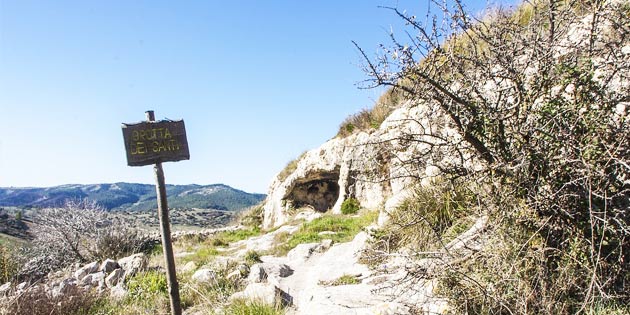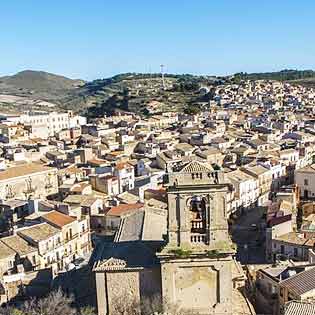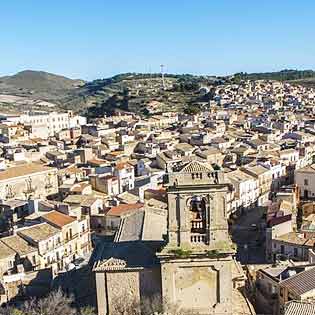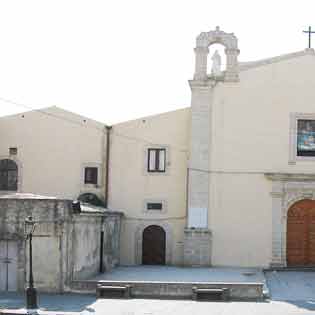Cave of the Saints in Licodia Eubea
The Grotta dei Santi in Licodia Eubea, located on the Poggio dei Santi hill, is a rock complex used in late antiquity as a necropolis and in the sixth century AD. as a rupestrian oratory used for the worship of a small community.
Due to its proximity to the Amerillo river, the Colle represented the ideal place for settling rocky villages during the centuries of the Late Empire and in those of the Byzantine dominion. < br> On the site there is a first terrace and a first group of underground chambers, which still partly maintain the characteristics of their cemetery destination.
A short passage leads to the second terrace and the best preserved catacomb.
It it has three openings on the external wall, of which the central one must have been the original one; the lateral ones, slightly arched, were opened at a later time. Inside, in the rectangular room, there are the remains of four sarcophagus tombs dug into the rock with a "step" pattern. The center of the room is occupied by a row of six "canopy" or "tegurium" tombs. Above the arches of the "canopy" tombs, traces of pictorial panels with a dark background are still visible, outlined by a red frame. Unfortunately, the "theory" of the Saints which was supposed to take place in the fresco and which would have given the name to the entire rock complex is no longer visible. There are also hollows for storing the oil lamps, while some arcosoli and canopies are damaged. A short corridor leads to a large burial which presents an unusual mixture of structural forms and which is believed to have been destined for a prominent figure in social position or "holiness" within the community.
The second room has completely lost its cemetery characteristics to make room for the creation of the cenobitic oratory, with a rectangular room with a flat vault, an apse on the eastern side, formed by the arcosolium with the pictorial panel with the scene of the Crucifixion datable to around the 11th and 12th centuries. In the panel with the theme of the "staurosis" the figure of Christ with the crucified halo is shown occupying the central part of the representation, flanked by two minor figures, interpreted as the Madonna, on the right, and St. John, on the left. A small figure in a short tunic inserted in the space between St. John and the cross has been identified with the character of Longinus in the act of piercing the side of Christ. strong> dieri , of the rupestrian environments in the past used as homes.



